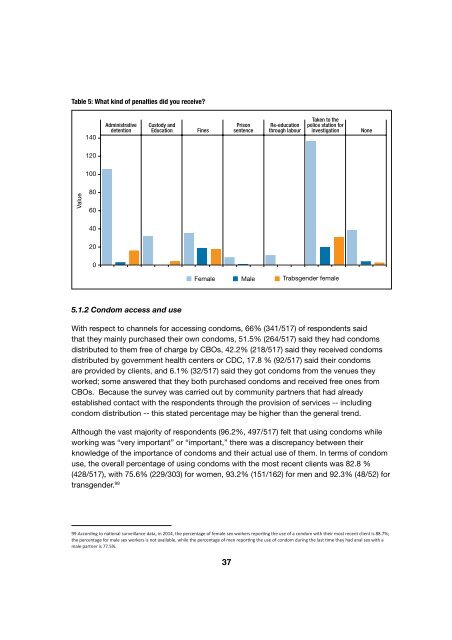THE CONDOM QUANDARY
The-Condom-Quandary-Report
The-Condom-Quandary-Report
You also want an ePaper? Increase the reach of your titles
YUMPU automatically turns print PDFs into web optimized ePapers that Google loves.
Table 5: What kind of penalties did you receive?<br />
5.1.2 Condom access and use<br />
With respect to channels for accessing condoms, 66% (341/517) of respondents said<br />
that they mainly purchased their own condoms, 51.5% (264/517) said they had condoms<br />
distributed to them free of charge by CBOs, 42.2% (218/517) said they received condoms<br />
distributed by government health centers or CDC, 17.8 % (92/517) said their condoms<br />
are provided by clients, and 6.1% (32/517) said they got condoms from the venues they<br />
worked; some answered that they both purchased condoms and received free ones from<br />
CBOs. Because the survey was carried out by community partners that had already<br />
established contact with the respondents through the provision of services -- including<br />
condom distribution -- this stated percentage may be higher than the general trend.<br />
Although the vast majority of respondents (96.2%, 497/517) felt that using condoms while<br />
working was “very important” or “important,” there was a discrepancy between their<br />
knowledge of the importance of condoms and their actual use of them. In terms of condom<br />
use, the overall percentage of using condoms with the most recent clients was 82.8 %<br />
(428/517), with 75.6% (229/303) for women, 93.2% (151/162) for men and 92.3% (48/52) for<br />
transgender. 99<br />
<br />
<br />
<br />
37


